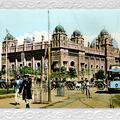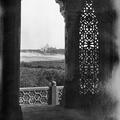General Post Office, Bombay
In 1913 the General Post Office moved into its present building which was designed by John Begg, the Consulting Architect to the Government during the period. Mumbai's GPO features the city's famous Indo-Saracenic architectural style.



![[Child and Dog] [Child and Dog]](https://www.paperjewels.org/sites/default/files/styles/square_thumbnail/public/slides/child-and-dog.jpg?itok=88BXTF5X)


![[Two Women with Tinted Glitter] [Two Women with Tinted Glitter]](https://www.paperjewels.org/sites/default/files/styles/square_thumbnail/public/slides/two-women-tinted-glitter.jpg?itok=ilIabKzv)


![[Peshawar Bazaar] [Peshawar Bazaar]](https://www.paperjewels.org/sites/default/files/styles/square_thumbnail/public/slides/peshawar-bazaar-1938.jpg?itok=pdaDKz8g)
